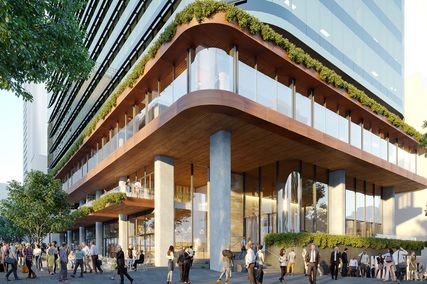
Richard Blythe.
Architectural education in the United States is, generally speaking, in good shape. There is high student demand for programs, good employment opportunities for graduates, and the modes of education practised within architecture schools are being recognized across the higher education sector as model forms of learning. At the same time, the discipline and the profession are facing unique challenges that must frame the future of architectural research and education in undergraduate, graduate and professional realms; these challenges are an important bellwether for institutional (both professional and educational) complacency. The greatest challenge for architecture lies at the intersection of the environment, the industrial basis of our current economy and emerging technologies as these might be framed within or even beyond the human condition.
Much of what we understand as “Architecture” is specific to the very stable environmental conditions of the Holocene. The predictability of those conditions encouraged architectural responses that could operate within relatively narrow margins of change. The Anthropocene requires architecture to be rethought in terms of less predictable, less stable and more hostile environmental conditions.1 How human life is reorganized in response to the earth’s changing water cycle and the resultant impacts on cities, coastlines, forests and temperatures must be a key object of research for architecture as it operates across the spectrum, from the undergraduate studio to national think tanks. In the US state of Virginia, coastal towns such as Norfolk are experiencing tidal inundation of Venetian proportions, although at a recent American Institute of Architects conference session, only about half of the architects present accepted that climate change was a factual condition. The challenges for architecture are not just about new kinds of buildings and adaptive re-use but also about policy, planning and politics within our communities. Architecture can no longer afford to live in a capital “A” bubble.
Working from the climate change sciences documented in a 2019 United Nations special report on climate change, 2 US economist Jeremy Rifkin points to the opportunity that is emerging in the convergence of transportation, communication and energy technologies. This convergence, Rifkin argues, will enable an industrial revolution through which we can significantly rebalance our reliance on fossil fuels and create a new economic base that resets the current divergent distributions of wealth across our communities. Buildings, towns and cities will increasingly become networks of power generation, power storage and power trading in which, for example, vehicles become plug-and-play mobile power-storage devices. Pointing to the rapid emergence of the current Industrial Age in the US within a twenty-year period, Rifkin is hopeful that, despite the dire forecasts, and provided a tipping point comes soon enough, it will be possible to substantially meet climate challenges through infrastructure transformation. This will require a total rethinking and reorganization of our current built environments and represents a significant opportunity for architecture.
Technology, geometry and means of production are foundational to architecture and each has undergone radical change in recent decades. Built environment disciplines have been slower than other sectors, such as manufacturing, to incorporate new technologies and some in the US are predicting immanent disruption. The development of the Mandelbrot set of fractal geometries is part of the radical development of complex geometries in the second half of the twentieth century that have made possible much of the visualization and imaging technology that we now take for granted. How we make sense of these geometric shifts within architecture has been the subject of some of the more interesting architectural developments over the last few decades and will continue to be so. Combined with new technologies, these geometric innovations will play a significant role in the transformation of our current means of production in the built environment. For architecture, such convergence offers rich ground for research in everything from the scientific and technological to the ethical, theoretical and poetic.
1. Holocene refers to the geological age since the last “ice age.” Anthropocene is a term currently being used to describe a subsequent age of climate change that dates from the beginning of the current Industrial Age (the fossil fuel era). Holocene is a scientifically recognized period; Anthropocene is not but is commonly referred to in discussions around the impact of climate change.
2. Intergovernmental Panel on Climate Change (IPCC), Special Report: Global Warming of 1.5°C , 2018, ipcc.ch/ sr15/ (accessed 13 November 2019).
Source

Discussion
Published online: 1 Oct 2020
Words:
Richard Blythe
Issue
Architecture Australia, January 2020














